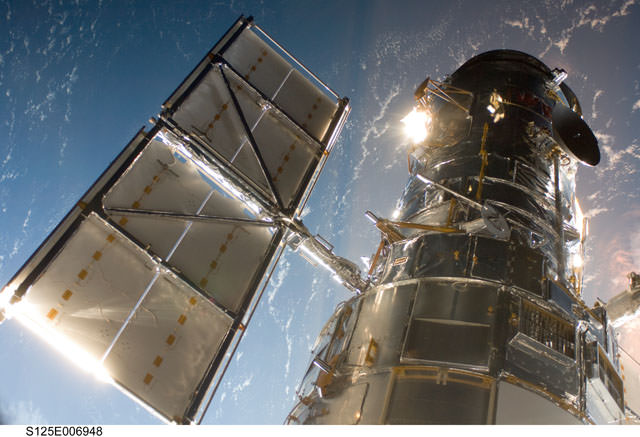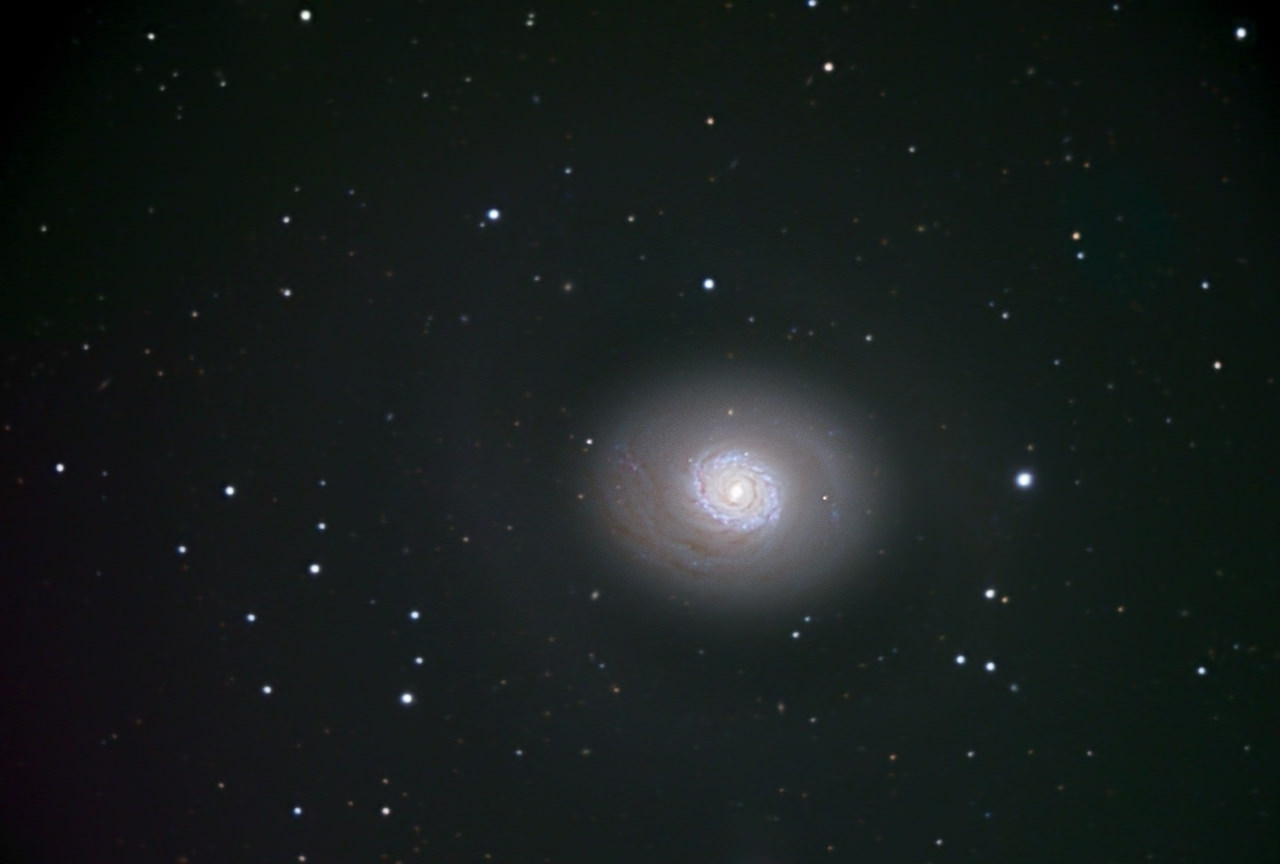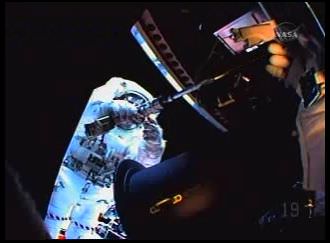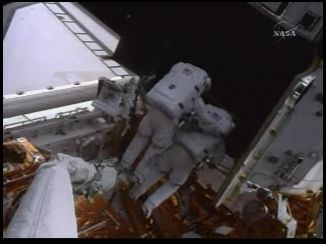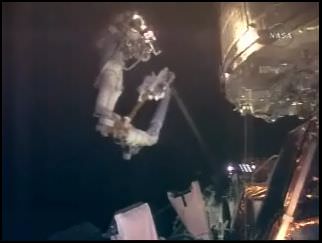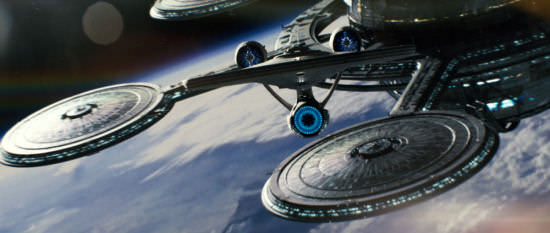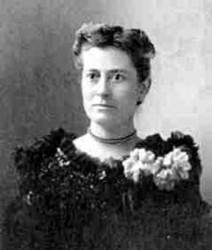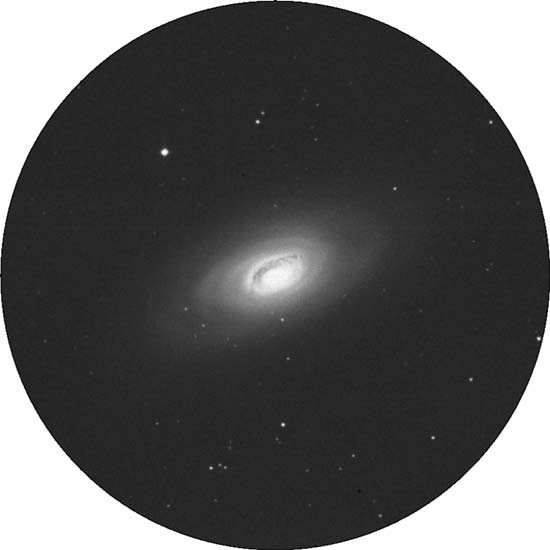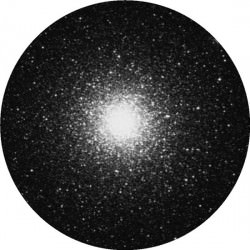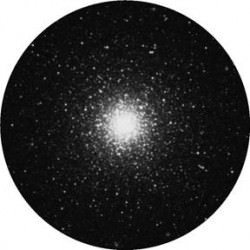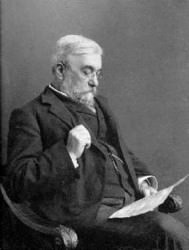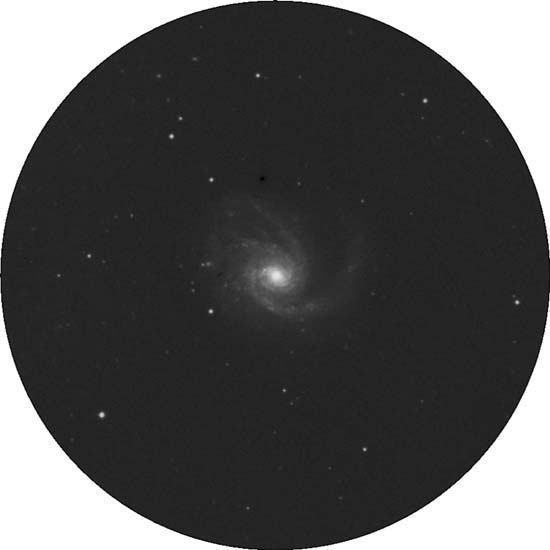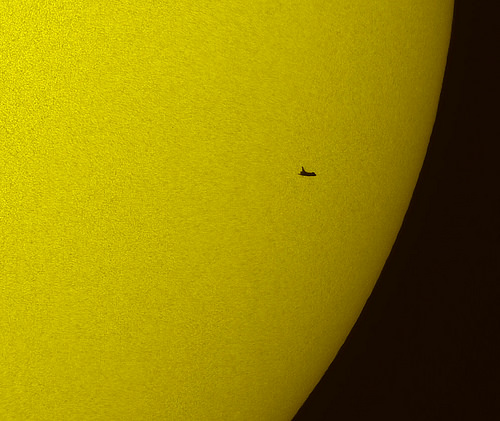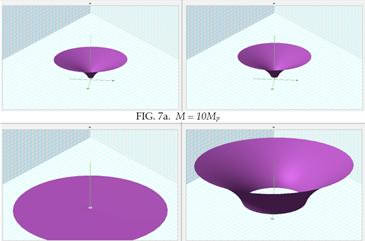[/caption]
The long-awaited Servicing Mission 4 for the Hubble Space Telescope has provided drama, nail-biting excitement, fist-pumping triumphs and ‘what else could go wrong now’ moments. But the best way to to describe the mission is to let the amazing images from the EVAs do the talking. Below are high-resolution images from NASA, highlighting the first three spacewalks.

The mission began with the picture-perfect, no-delay, long-awaited launch on May 11, 2009.
EVA #1

The first spacewalk of the mission, performed by astronauts John Grunsfeld and Drew Feustel lasted a little over 7 1/2 hours. They successfully installed the new Wide Field Camera 3 science instrument and a new Science Instrument Command and Data Handling Unit. Both WFC-3 and the SI C&DH passed their “aliveness” tests, which essentially means the devices powered on correctly. The WFC-3 also passed its functional test, meaning the capabilities of the instrument itself were tested. The SI C&DH unit has also received an initial OK on its functional test, pending final review of data sent down to the ground.
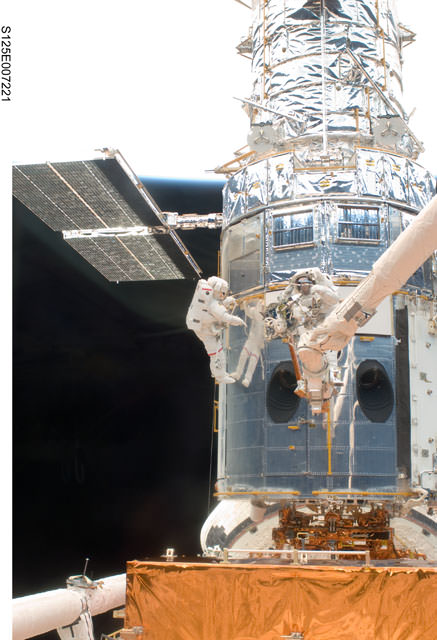
A stubborn bolt threatened to thwart one of the spacewalk’s main goals, replacing the venerable space telescope’s workhorse optical camera with a new and improved instrument. But after a fair amount of old fashioned elbow grease, the WFPC2 was able to be removed.

This close-up of Grunsfeld was taken by Drew Feustel, whose reflection is visible in Grunsfeld’s visor. Feustel is attached to the end of the shuttle Remote Manipulator System, or robotic arm. Grunsfeld was the free-floating astronaut for the EVA.

Here, Feustel, on the end of the shuttle’s robotic arm, carries the piano-sized WFPC3 to its new home inside Hubble.
EVA #2

The second EVA of the mission provided some challenges to astronauts Michael Good and Mike Massimino. However, they achieved all the objectives for this spacewalk, it just took them awhile — 7 hours and 56 minutes. They installed three Rate Sensor Units (RSUs), with a pair of gyros in each, and the first of two new battery module units.

Good and Massimino were not able to get one of the three prime RSUs into its slot but were able to install a spare, giving Hubble the new gyros it needed. The gyros are used to change the orientation of the telescope and keep it fixed on a particular astronomical target during observations.

The spacewalkers also removed one of the original battery modules from Bay 2 of the telescope and replaced it with a new unit. The batteries provide power to the telescope when Hubble passes into Earth’s shadow and its solar arrays are not exposed to the sun. Ground controllers at Goddard’s Space Telescope Operations Control Center confirmed that all six gyroscopes and the new battery passed preliminary tests.
EVA #3

The third EVA of the mission went like clockwork as Grunsfeld and Feustel teamed up again. They removed the Corrective Optics Space Telescope Axial Replacement and installed in its place the new Cosmic Origins Spectrograph. They also completed an unprecedented repair of the Advanced Camera for Surveys replacing an electronic card and installed a new electronics box and cable.

To do the repairs on ACS, Grunsfeld removed 32 screws from an access panel to replace the camera’s four circuit boards and install a new power supply. The two astronauts used specially designed tools to do a job that was never intended to be done on orbit. But they did it, and with efficiency.
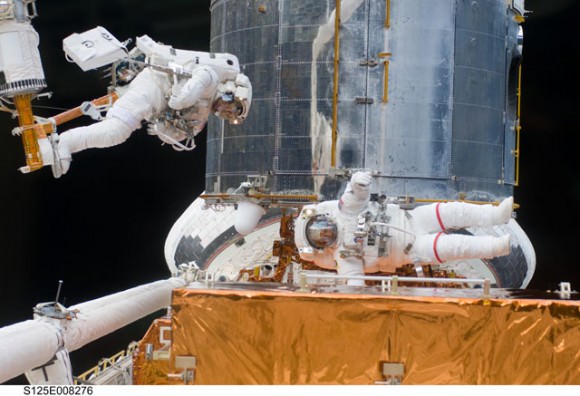
Engineers at Goddard have already performed “aliveness” tests on both COS and ACS to verify they have electrical power. However while a functional test of the ACS indicated success in reviving the instrument’s heavily used wide-field channel, officials said early Sunday that it appears the repairs failed to resolve power problem with the camera’s stricken high-resolution channel and it appears “down for the count.”
We’ll keep you posted on any developments with ACS, and provide more high-resolution images from the remainder of the mission soon!
For more images from the mission, or to download higher resolution versions of the pictures here, visit NASA’s Human Spaceflight gallery.

